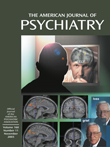A Prospective Study of Childhood Neurocognitive Functioning in Schizophrenic Patients and Their Siblings
Abstract
OBJECTIVE: This study evaluated childhood cognitive functioning in individuals who later developed schizophrenia and in their unaffected siblings. METHOD: Through the National Collaborative Perinatal Project, seven subtests of the Wechsler Intelligence Scale for Children were administered at age 7 to 32 individuals who developed schizophrenia in adulthood, 25 of their nonschizophrenic siblings, and 201 demographically similar nonpsychiatric comparison subjects. Mixed model analysis was used to examine between-group differences in standardized scores on the subtests. RESULTS: The probands and unaffected siblings had lower scores for picture arrangement, vocabulary, and coding than the comparison subjects but differed from each other only on the coding subtest. CONCLUSIONS: Children who later developed schizophrenia and their siblings showed similar patterns of deficits involving spatial reasoning, verbal knowledge, perceptual-motor speed, and speeded processes of working memory. However, the probands exhibited more severe deficits in perceptual-motor speed and speeded processes of working memory than their unaffected siblings.



